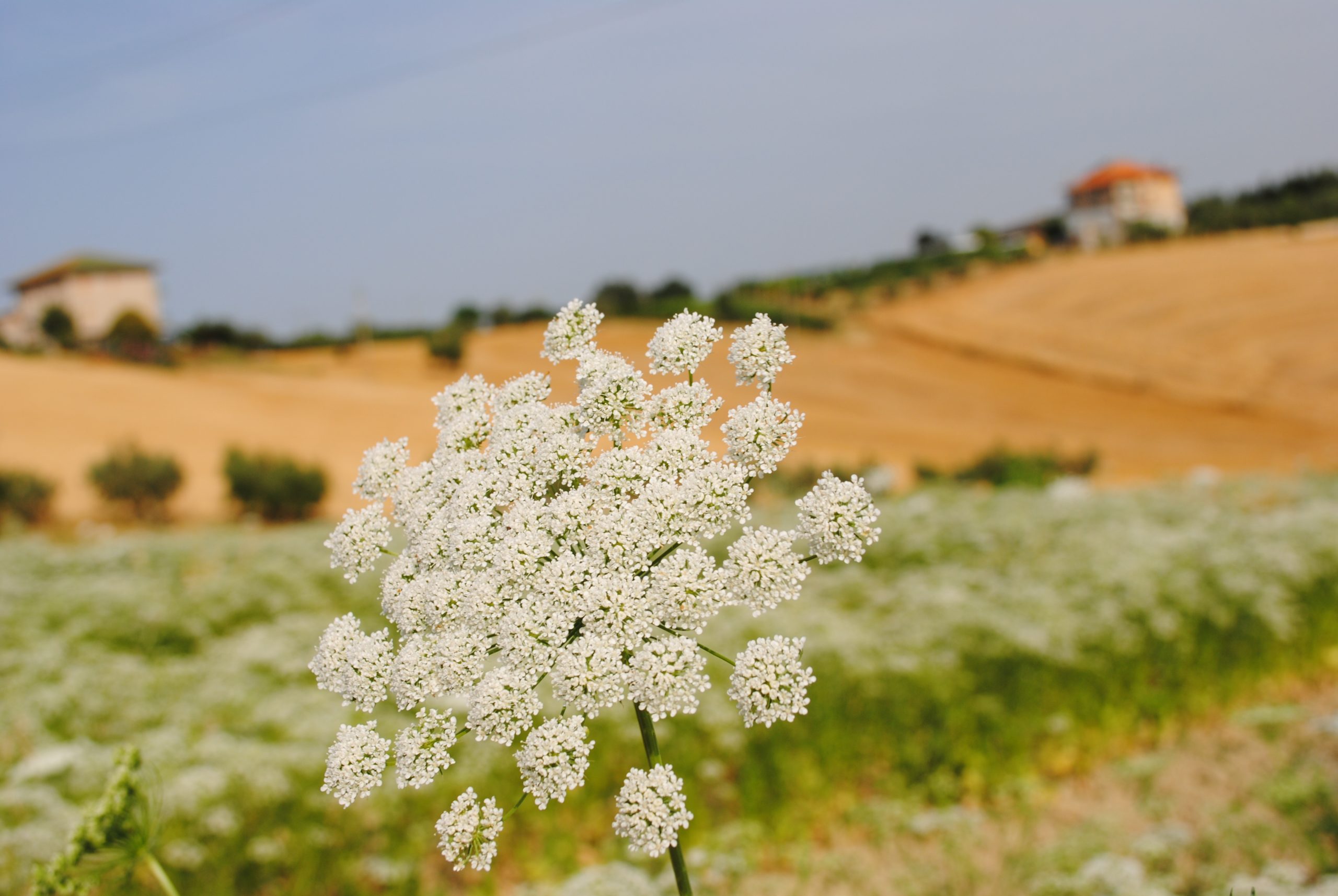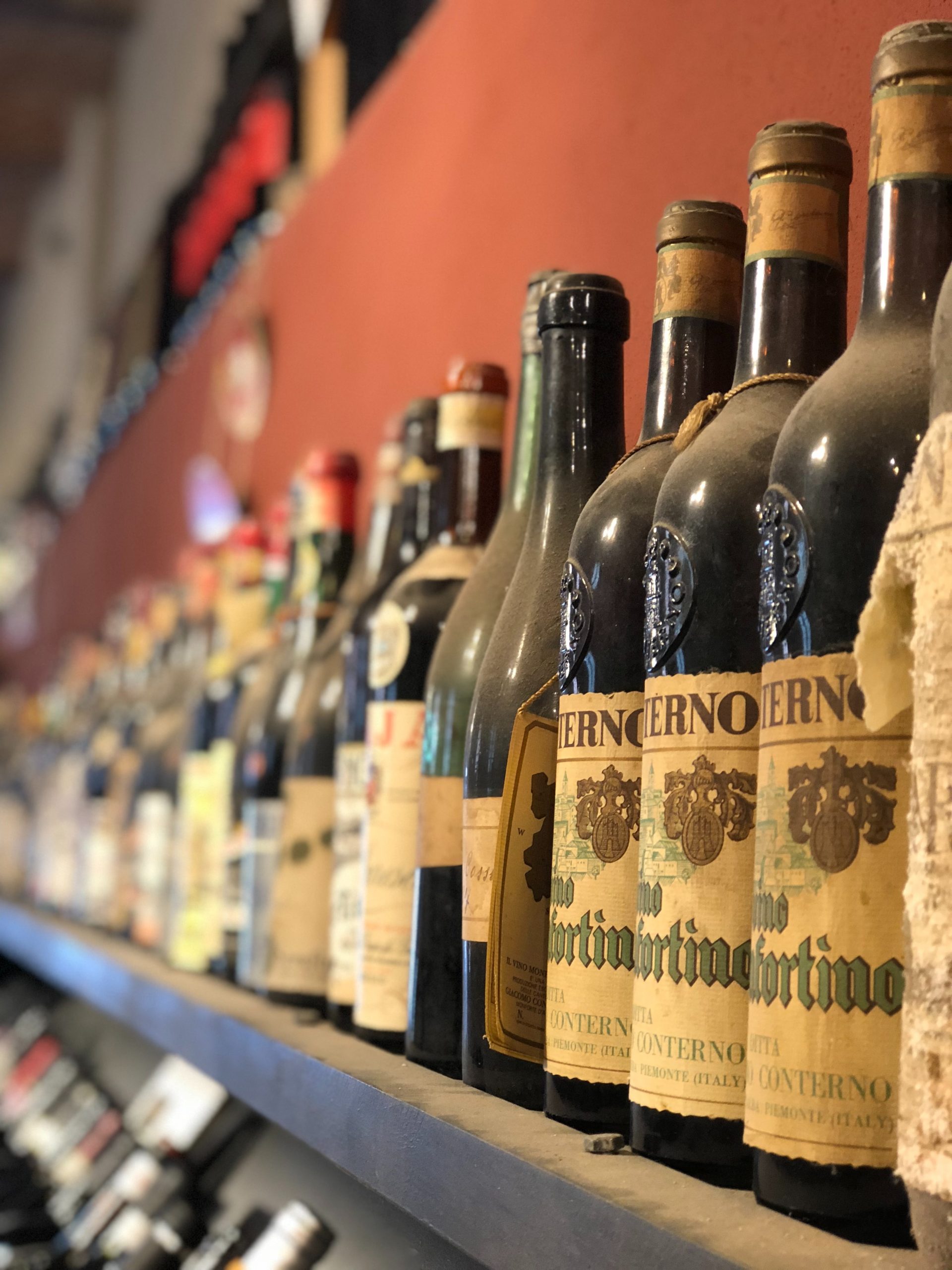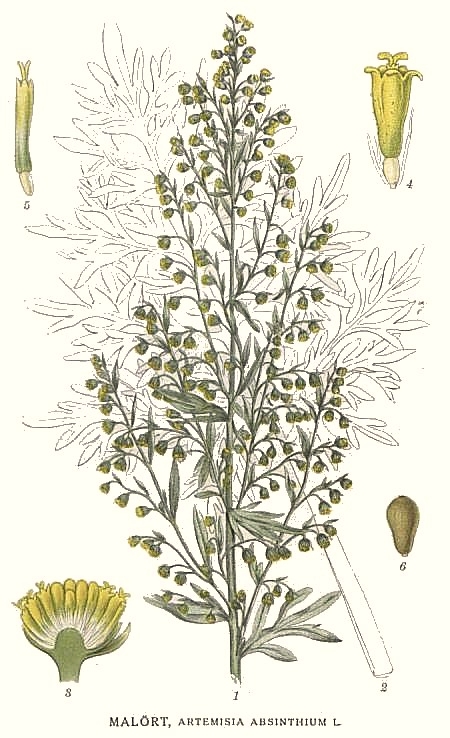Anisette (also known as Anisetta) is Italy’s beloved anise liqueur, a sweet and aromatic spirit that has captivated drinkers for over 150 years. Often confused with Sambuca or pastis, this traditional Anisette drink has a gentler flavor profile and deep roots in Southern Italian culture. It is made from green aniseed, neutral alcohol, and sugar, creating a distinctive licorice-flavored drink that’s gentler than sambuca or ouzo.
Originally crafted in Ascoli Piceno in the Marche region, the anisette drink has become synonymous with Italian hospitality and post-meal traditions. Whether you’re wondering what is Anisette made of, how to pronounce it (ah-nee-ZEHT-teh), or the best ways to enjoy this Anise liqueur Italy treasures, this complete guide covers everything about Italy’s most famous Anisette liqueur.
Table of Contents
What Is Anisette Liqueur?
At its core, anisette is crafted from three essential ingredients:
- Green aniseed (Pimpinella anisum) – The primary flavoring agent
- Neutral alcohol – Typically grain-based spirits
- Sugar – For sweetening and body
- Additional botanicals – Varies by producer (flowers, seeds, fruits)
The traditional method involves macerating or distilling aniseed (or green anise) into alcohol, then sweetening the infusion to create a syrupy, clear liqueur. Unlike sambuca, which often includes essential oils or additional herbs, anisette is purist—letting the singular flavor of anise shine through.
What Is Anisette Made Of?
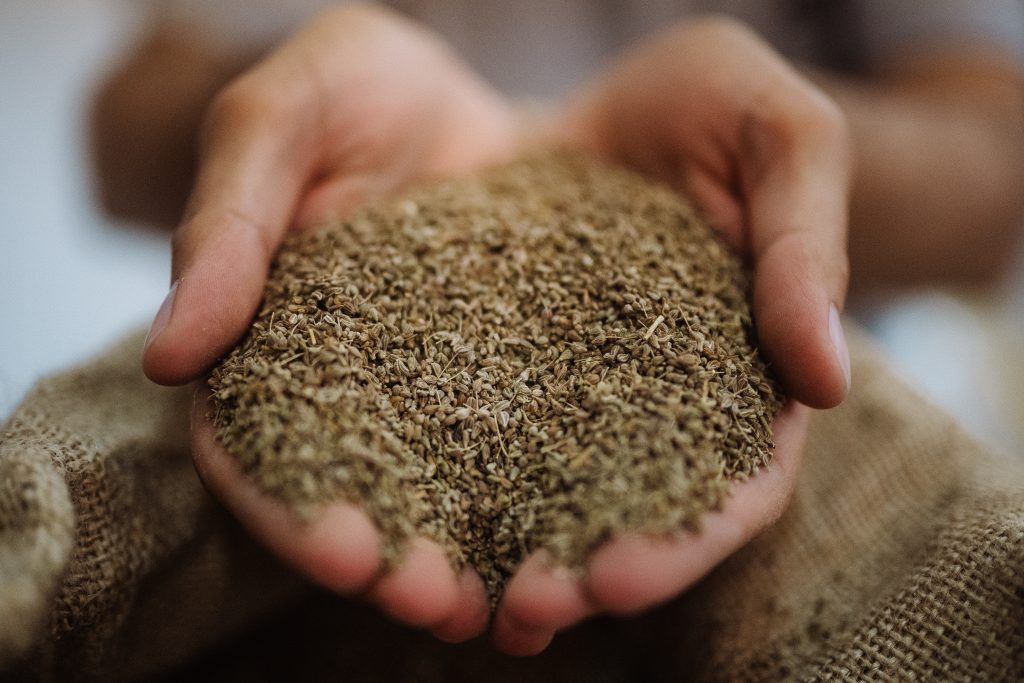
At its core, anisette is crafted from three essential ingredients:
- Green aniseed (Pimpinella anisum) – The primary flavoring agent
- Neutral alcohol – Typically grain-based spirits
- Sugar – For sweetening and body
- Additional botanicals – Varies by producer (flowers, seeds, fruits)
The traditional method involves macerating or distilling green aniseed into alcohol, then sweetening the infusion to create a syrupy, clear liqueur. The anise used in premium Italian anisette, particularly from the Marche region around Ascoli Piceno, is considered superior due to the clay soil composition, which makes it two to three times more fragrant than anise from other Mediterranean areas.
Unlike sambuca, which often includes essential oils or additional herbs, anisette is purist in approach—letting the singular flavor of anise shine through. The production process involves discontinuous steam distillation, and the “flavoring” component comes from separate distillations of carefully chosen flowers, seeds, and fruits.
How to Pronounce Anisette – the correct pronunciation
English: [an-ee-ZET]
Italian: [ah-nee-ZEHT-teh]
Both pronunciations are correct, though the Italian version may earn you an extra smile at the bar. In Italian, the drink is also called “Anisetta,” which follows the same pronunciation pattern with the feminine ending.
What Does Anisette Taste Like?
Anisette is known for its unmistakable licorice flavor—light, sweet, and aromatic. Unlike its stronger cousins like sambuca or ouzo, anisette is typically more delicate, offering soft notes of sugar, fennel, and star anise. The mouthfeel is silky and smooth, with a lingering herbal sweetness that makes it approachable even for those new to anise-flavored spirits.
The flavor profile includes:
- Primary notes: Sweet licorice, anise, fennel
- Secondary notes: Herbal botanicals, sugar sweetness
- Finish: Clean, aromatic, with lingering anise warmth
One fascinating characteristic of anisette is its reaction to water or ice—it turns cloudy or pearl gray due to the anethole compound forming opaque crystals when it comes into contact with water. This phenomenon, known as the “ouzo effect,” is common among anise-based spirits.
How to drink Anisette
The Anisetta (anisette) liqueur is essentially a digestivo, so it is meant to uplight the stomach after a meal. Anise, in fact, is known to aid with intestinal disorders. The Greek mathematician Pythagoras was the first to state that anise would prevent belching and stomach pain. In Rome, anise was used in a sweet cake at the end of banquets to aid in digestion.
Traditional Serving Methods
- Caffè Corretto: Pour anisette directly into espresso coffee. Order by saying “Caffè corretto con anisetta, per favore.”
- Ammazzacaffè: Pour anisette into your empty espresso cup after finishing your coffee. This literally “kills the coffee” by rinsing the cup and mixing with leftover coffee drops and sugar.
- Anisetta con la Mosca: Serve straight anisette with a coffee bean floating in the glass (the “fly”).
- Aperitivo Style: Mix anisette with sparkling water (seltz) for an early evening drink.
- Neat: Serve chilled or at room temperature as a digestivo after meals.
One of the most common ways to enjoy Anisette is together with coffee, which is also the beverage that defines the end of a meal.
Anisette can be poured inside the coffee, which becomes a “caffe’ corretto” (you will be ordering a “Caffe’ corretto con Anisetta, per favore”?). Or it can be used as “ammazzacaffe'”, which means that the Anisette will be poured into the espresso cup after you finish drinking it, and it will literally “rinse” the cup, mixing with some of the leftover coffee drops and sugar.
Always linked to the tradition of having Anisetta with coffee, you can also order an “Anisetta con le mosca”, meaning “with the fly”, which is served as straight Anisetta with a coffee bean in the glass.
If you come earlier in the evening, you can try the Anisetta as an aperitivo with the addition of some sparkling water, also called seltz. One curiosity is that the anisette reacts on contact with fresh water or ice, taking on a strange color, tending to pearl gray. The cause is attributable to the active ingredient of anise, ananol, which forms opaque crystals in contact with water/ice. Talking about ice, at the caffe Meletti, you can step up to the gelato window and get a scoop of anisetta ice cream. It’s really good.
Modern Serving Suggestions
While traditional methods remain popular, modern bartenders have embraced anisette in cocktails. It works beautifully in a White Negroni with a fennel twist, or in a Herbal Collins with lemon and mint. The liqueur also pairs excellently with gelato—at Caffè Meletti in Ascoli Piceno, you can even get anisette-flavored ice cream.
Anisette vs Sambuca: Key Differences
| Aspect | Anisette | Sambuca |
|---|---|---|
| Primary Flavor | Delicate anise, sweet | Stronger anise, more intense |
| Alcohol Content | 25-30% ABV | 38-42% ABV |
| Ingredients | Pure aniseed focus | Essential oils, additional herbs |
| Origin | Ascoli Piceno, Marche | Various Italian regions |
| Traditional Serving | With coffee, as digestivo | Flambéed, con la mosca |
| Sweetness Level | Higher sugar content | Less sweet, drier |
While both are anise-based Italian liqueurs, anisette offers a more approachable, sweeter experience compared to the stronger, more medicinal character of sambuca. Anisette is perfect for those who enjoy licorice flavors but prefer a gentler introduction to anise spirits.
The history of Anisette
Anisette is particularly popular in the Mediterranean region, and different countries have their own versions. The Italian version was born in the town of Ascoli Piceno. There are 2 men and their families who are mostly linked and who have shaped the history of the Italian Anisette/Anisetta: Umberto Rosati and Silvio Meletti.
Silvio Meletti, the distiller who introduced Anisetta to the world
While Anisetta Rosati is pretty famous in Ascoli, if we look outside Marche and Italy, the most know Anisetta is the Meletti. This is because Silvio Meletti also used his talent for commercializing his products; he used to give as presents liquor bottles to people he trusted in neighboring towns so the liquor would be known outside his town. He brought his liqueur of Anisette to well-known international fairs of that time and he was awarded Honorable Mention at the Paris international expo in 1878. Sales became florid and Anisette achieved success all over Italy.
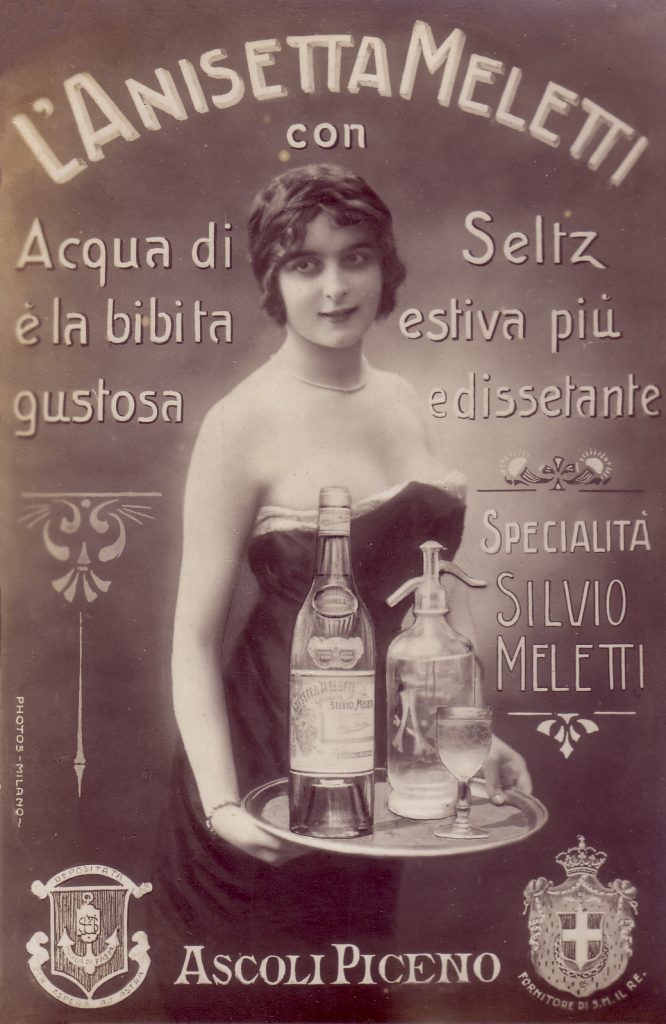
Silvio learned her mother’s technique and recipes and started studying French essays on distillation (His family still owns his book dated 1700), and after several experiments, he enhanced the recipe and distillation technique that is still used today to obtain the Anisetta Meletti. This recipe’s main ingredient is the green anise (Pimpinella anisum), a type of anise typical of the Mediterranean area; green anise is strongly aromatic because of the clay nature of the soil in the Marche region and particularly in the Ascoli area. The anise of these lands is, in fact, two or three times more fragrant than the anise in other Mediterranean areas. This particularly fragrant anise was and still is going through a process of discontinuous steamed distillation. The “flavoring” part of the Anisette liqueur is taken from other distillations of carefully chosen flowers, seeds, and fruits, and then is added to the liquor. The recipe and the procedure elaborated back in 1870 are the same used today by the Meletti heirs, and the Meletti family is still the only company owner.
Meletti produces annually about 200,000 bottles of anisetta — the Classic (34% ABV), Dry (42%), and a Riserva (42%), the latter of which Meletti produces only 100 bottles(!) and which is not available in the US. The production of anisetta represents 50% of Meletti’s total output.
Matteo Meletti, the fifth generation, told me that this recipe is so secret that Silvio (his great great grandfather) left it to his son (my great grandfather) in code so that if somebody stole his recipe book they couldn’t understand!! It is made by separate distillation and it includes seeds and fruits.
Anisette Cocktails and Recipes
Beyond the glass, anisette has a storied place in Italian kitchens. It flavors traditional anisette cookies and biscotti, often served at holidays or weddings. For a modern twist, try it in cocktails like a White Negroni with a fennel twist, or a Herbal Collins with lemon and mint.
While anisette shines when served traditionally, it also creates exceptional cocktails that highlight its unique flavor profile.
Classic Anisette Cocktails
Anisette Spritz:
– 2 oz anisette liqueur
– 4 oz Prosecco
– 2 oz soda water
– Lemon twist
Serve over ice in a wine glass
Mediterranean Collins:
– 2 oz anisette
– 1 oz fresh lemon juice
– 4 oz soda water
– Fresh mint sprig
Shake anisette and lemon, top with soda
White Negroni Twist:
– 1 oz gin
– 1 oz anisette liqueur
– 1 oz Lillet Blanc
– Fennel frond garnish
Stir with ice, strain into a coupe.
Best Italian Anisette to try
Finding quality anisette liqueur depends on your location and preference for authenticity. Here’s your comprehensive buying guide:
Premium Italian Brands to Look For
- Meletti Anisette: The most internationally recognized, available worldwide
- Rosati Anisette: Traditional Ascoli producer, harder to find outside Italy
- Varnelli: Another respected Marche region producer
Authentic anisette liqueur should be clear, have a strong anise aroma, and turn cloudy when mixed with water or ice. Check the label for “Product of Italy” and look for traditional producers from the Marche region for the most authentic experience.
Where to Purchase Anisette
- Online: Wine.com, Master of Malt, specialty Italian importers
- Physical Stores: Italian delis, upscale liquor stores, European specialty shops
- Price Range: Expect to pay $25-45 for a 750ml bottle of authentic Italian anisette
Frequently Asked Questions on Anisette
Is Anisette the Same as Sambuca? Anisette vs Sambuca
Anisette and sambuca are close cousins, but not quite the same. Both are sweet, anise-flavored liqueurs, but sambuca typically contains essential oils, additional herbs or spices, and sometimes a higher alcohol content. Sambuca is also more closely associated with the ritual of serving it with three coffee beans (con la mosca), while anisette has a simpler, purist appeal.
Are Anise and Anisette the Same?
No, anise and anisette are not the same. Anise is a natural spice plant (Pimpinella anisum) that produces seeds with a licorice-like flavor, while anisette is an Italian liqueur made from anise seeds, alcohol, and sugar. Think of it this way: anise is the ingredient, anisette is the finished alcoholic beverage.
Is Anise Hyssop used in producing Anisette?
No—anise hyssop is not used in producing anisette. Despite its name and similar aroma, anise hyssop is a flowering herb from the mint family, while anisette is made specifically from aniseed (Pimpinella anisum). The sweet, licorice-like flavor of anisette comes from distilling or infusing true anise seeds, not from herbs like anise hyssop or fennel. However, bartenders and chefs sometimes use anise hyssop as a garnish or flavor accent in cocktails and desserts inspired by anisette.
How Anise Becomes Anisette: The Transformation Process
- Harvesting: Green anise seeds are collected at peak ripeness
- Preparation: Seeds are cleaned and sometimes crushed to release oils
- Extraction: Anise is either macerated in alcohol or steam-distilled
- Blending: The anise extract is mixed with neutral alcohol
- Sweetening: Sugar is added to create the characteristic sweet profile
- Aging: The mixture may be aged to mellow the flavors
- Bottling: The final product is filtered and bottled as anisette liqueur
Anisette vs Absinthe
Anisette and absinthe are both anise-flavored spirits, but they’re quite different in composition, strength, and cultural use.
Anisette is a sweet, clear liqueur made from aniseed, sugar, and neutral alcohol. It’s low in alcohol (usually around 25%) and known for its smooth, syrupy flavor—often enjoyed as a digestivo or in coffee.
Absinthe, on the other hand, is a much stronger spirit (typically 45–74% ABV) and contains wormwood, which gives it a more bitter, herbal profile. Historically associated with bohemian Paris, absinthe is not sweetened and is usually diluted with water in a ritualistic pour over sugar.
In short: anisette is sweet and gentle, while absinthe is intense and herbal—ideal for very different drinking experiences.
Can You Drink Anisette Straight?
Yes—anisette is often enjoyed neat, especially in Italy, where it’s served as a traditional digestivo after meals. Because of its high sugar content and smooth, herbal flavor, anisette is pleasant to sip straight, either chilled or at room temperature. For a classic Italian moment, try it in a small glass alongside espresso or biscotti.
How Long Does Anisette Last?
Unopened anisette can last indefinitely if stored properly in a cool, dark place. Once opened, it maintains quality for 3-5 years. The high alcohol and sugar content act as natural preservatives.
What Foods Pair Well with Anisette?
Anisette pairs beautifully with Italian desserts, especially almond-based cookies, biscotti, and cannoli. It also complements dark chocolate, espresso, and traditional Italian pastries. Many enjoy it with strong cheeses like Parmigiano-Reggiano.
When was Anisette invented?
Anisette dates back to at least the 16th century, with its origins rooted in the Mediterranean’s long history of herbal distillation. While many regions crafted anise-flavored spirits, it was in Italy and France where anisette took shape as a sweet, clear liqueur made specifically from aniseed. In Italy, particularly in southern areas like Marche, Basilicata, and Sicily, anisette became a staple digestivo—often made by small producers or even at home. One of the earliest and most famous commercial versions, Marie Brizard Anisette, was founded in Bordeaux in 1755, but Italy’s local variations carry their own deep cultural and culinary legacy.
Why Is Anisette Illegal?
Anisette is not illegal in most countries, including the U.S. and throughout Europe. However, confusion sometimes arises due to regulations around thujone, a naturally occurring compound in some anise-flavored spirits (like absinthe). Anisette, by contrast, is made from aniseed, not wormwood, and contains no banned substances. It’s perfectly legal and widely available—especially in Italy and among specialty importers abroad.
Why Does Anisette Turn Cloudy?
Anisette turns cloudy when mixed with water or ice due to the “louche effect.” This happens because anethole, the essential oil that gives anisette its licorice flavor, is soluble in alcohol but not in water. When water is added, anethole molecules clump together and form tiny droplets that scatter light, creating the characteristic cloudy, pearl-gray appearance.
Why Do Italians Drink Anisette?
Italians drink anisette because it’s deeply tied to regional tradition, family ritual, and post-meal pleasure. Especially popular in southern regions like Marche and Abruzzo, anisette has been served in homes, cafés, and celebrations for generations. It offers a soft, aromatic way to end a meal—and evokes a sense of nostalgia for many Italians, whether sipped solo or splashed into coffee.
Is anisette good for you?
Anisette, like most liqueurs, is best enjoyed in moderation. While it contains aniseed, which has been traditionally used for its digestive and soothing properties, anisette itself is high in sugar and alcohol, making it more of a treat than a health tonic. That said, a small sip after a meal—especially as part of a relaxed, convivial setting—can certainly contribute to a sense of well-being in the Italian way: slow, intentional, and joyful.
When is National Anisette Day?
National Anisette Day is celebrated each year on July 2nd. It’s a day to enjoy this classic anise-flavored liqueur, whether sipped straight, mixed into cocktails, or paired with traditional Italian cookies.
Does non-alcoholic Anisette exist?
Yes—non-alcoholic versions of anisette do exist, though they are less common than the traditional liqueur. These are usually sold as anisette syrups or flavoring extracts, capturing the sweet, licorice-like taste of anise without the alcohol. In Italy, such syrups are often used to flavor coffee, desserts, or cocktails for those who prefer an alcohol-free option. While they don’t offer the same complexity as distilled anisette, they provide a similar aromatic experience and can be a great substitute in baking or mocktails. Some Italian producers are Vincenzi, and Italiana Aromi.
Common Confusions – Anise vs. Anisette vs. Other Similar Products
- Anise ≠ Fennel: Different plants, though both have licorice notes
- Anisette ≠ Sambuca: Both are anise liqueurs, but sambuca is stronger and less sweet
- Anisette ≠ Ouzo: Ouzo is Greek, unsweetened, and stronger
- Anisette ≠ Pastis: Pastis is French, unsweetened, and contains additional herbs
- Anise ≠ Licorice Root: Different plants that share similar flavors
Experience Authentic Italian Anise Liqueur
Anisette liqueur represents more than just a drink—it embodies Italian tradition, family heritage, and the art of slow enjoyment. Whether you’re savoring it in a traditional caffè corretto, experimenting with modern cocktails, or using it in baking, this Italian anise liqueur offers a gateway to authentic Mediterranean culture.
From the clay soils of Ascoli Piceno to your glass, every sip of quality anisette tells the story of generations of Italian craftsmanship. As you explore this remarkable anisette drink, you’re not just tasting a spirit—you’re experiencing a piece of Italian heritage that has been perfected over more than a century.
Ready to discover your favorite way to enjoy anisette? Start with the traditional methods, then let your palate guide you toward the perfect anisette liqueur experience for your taste.
And if you want the real deal, plan a trip to Ascoli Piceno! Here is our city guide!
Bonus: you can use the Anisette Liqueur for yummy pastry!
We are writing a post with some recipes for Anisette cookies and some cakes. Come back for more!
